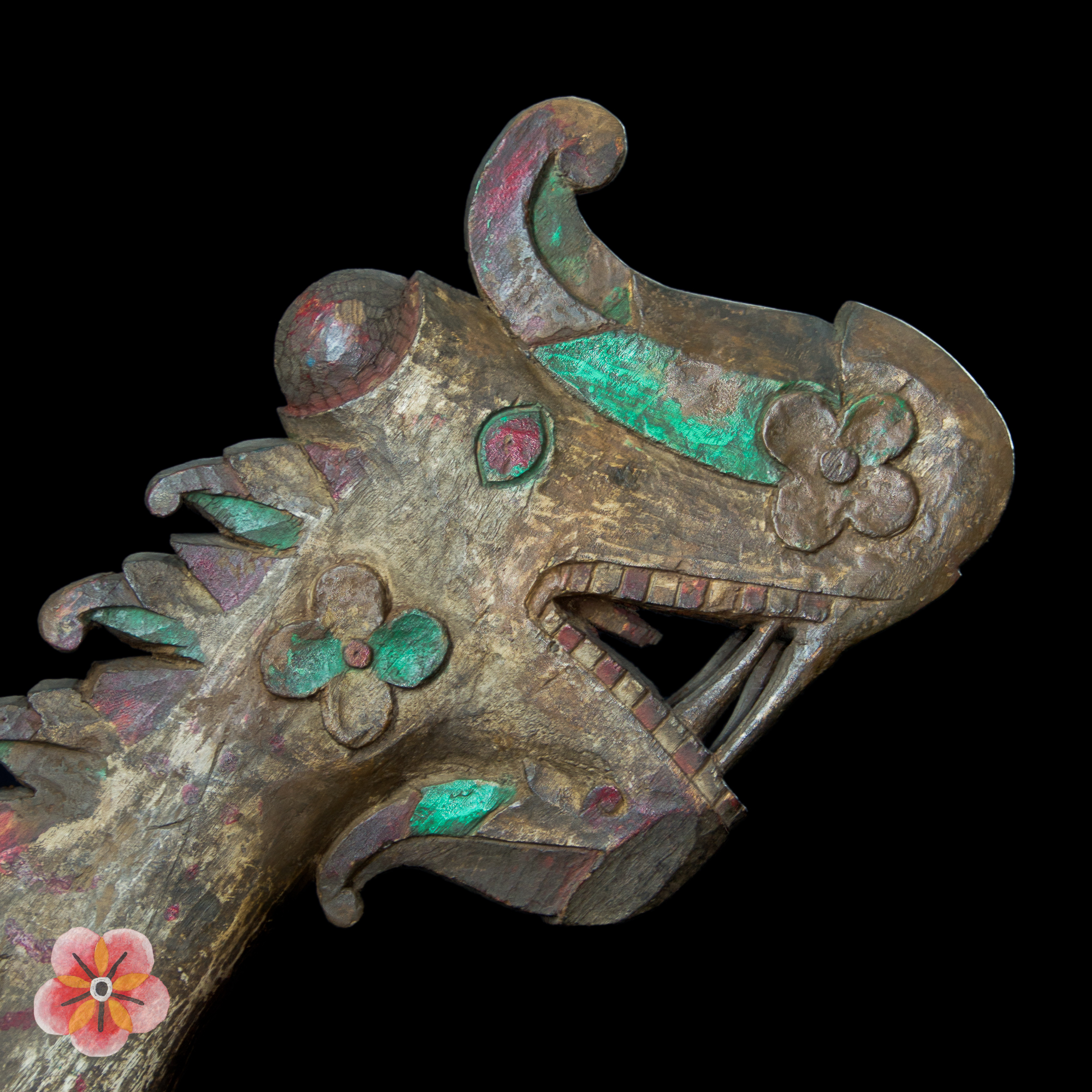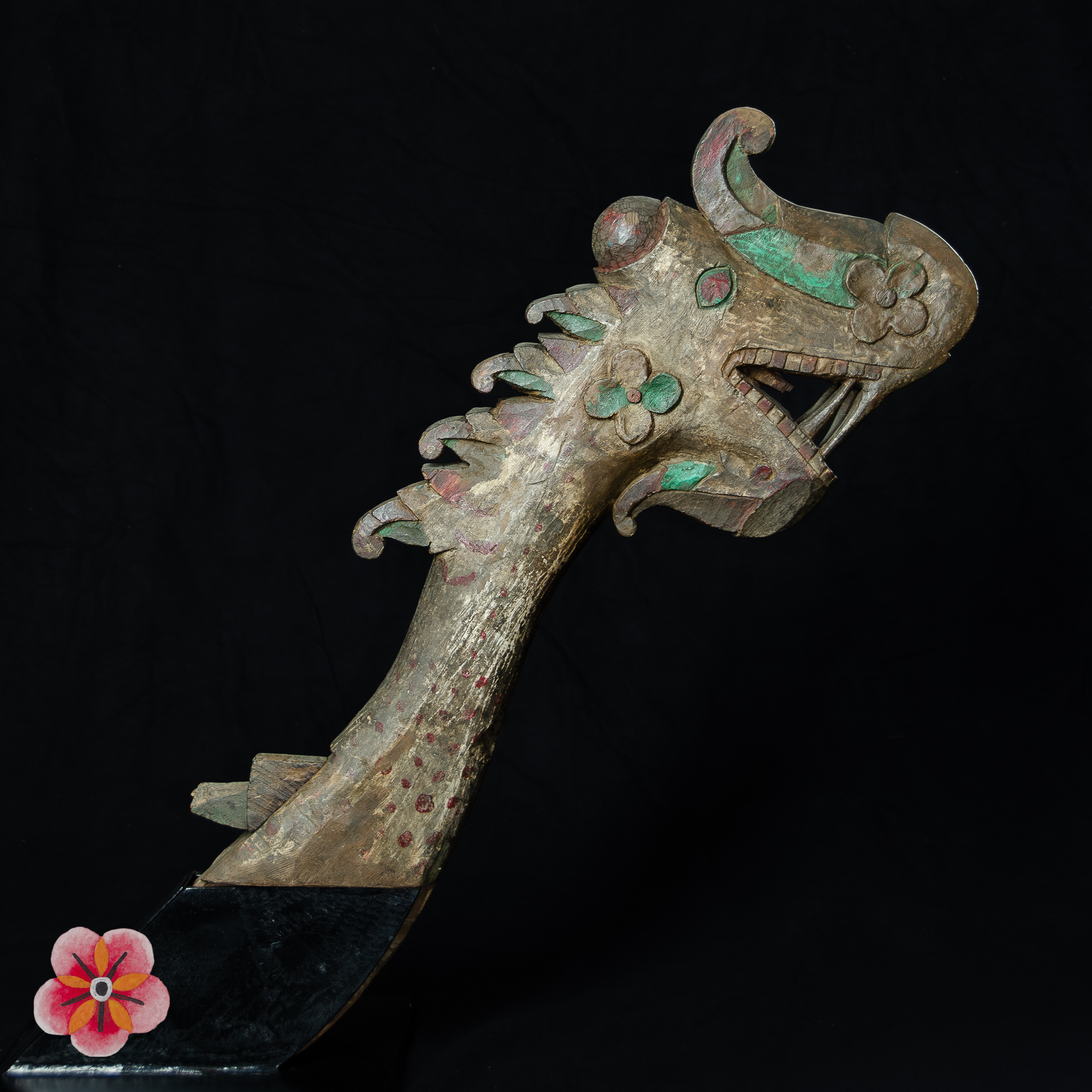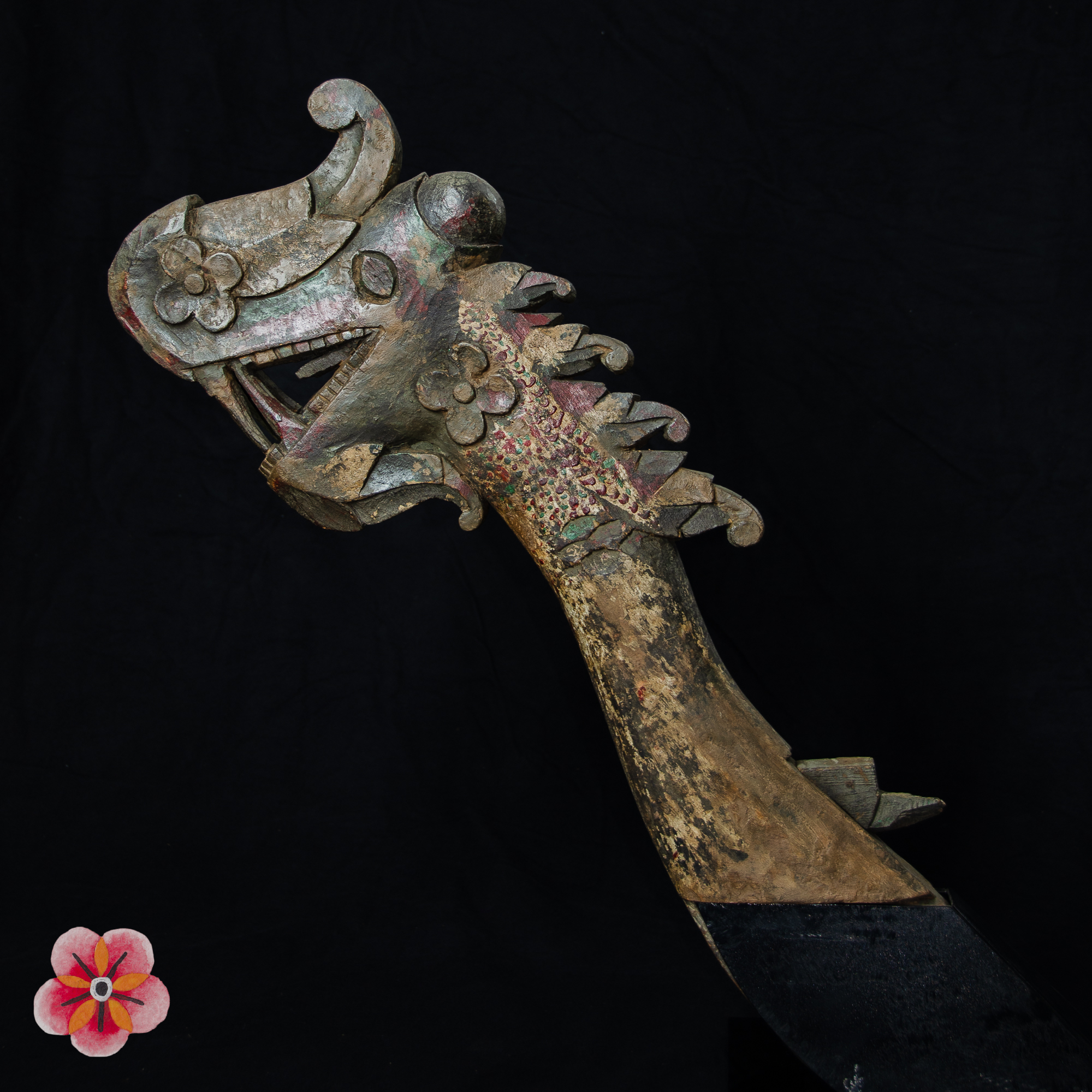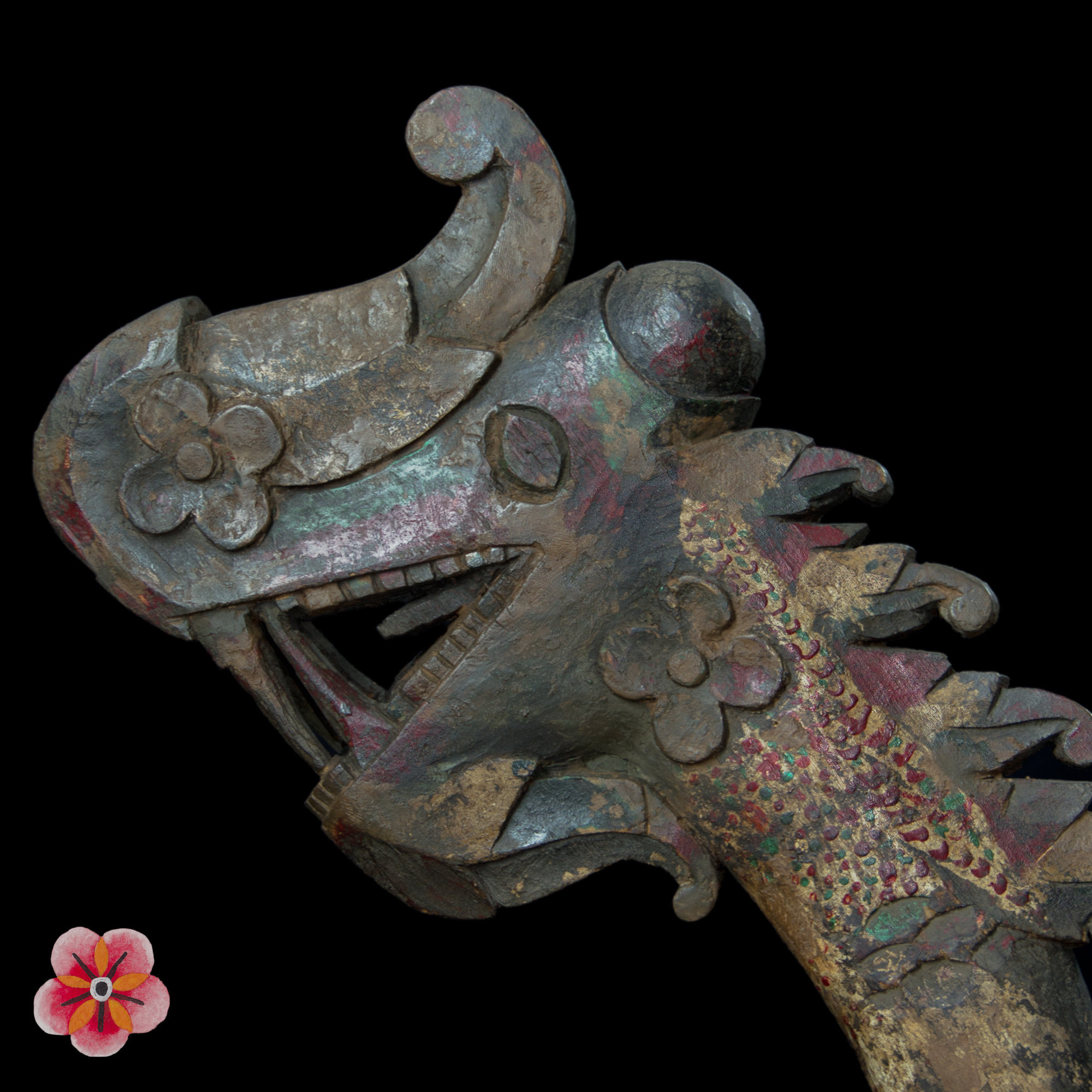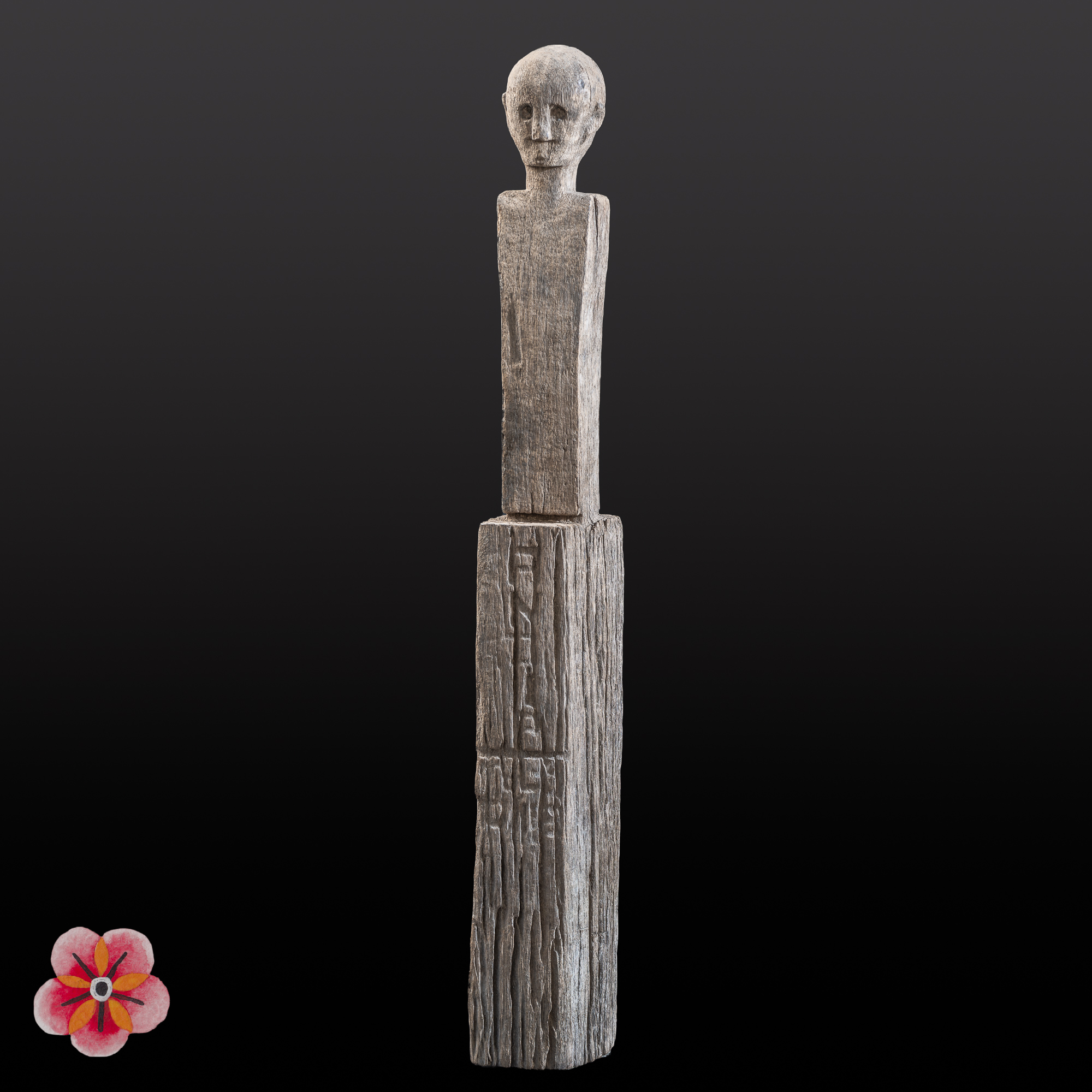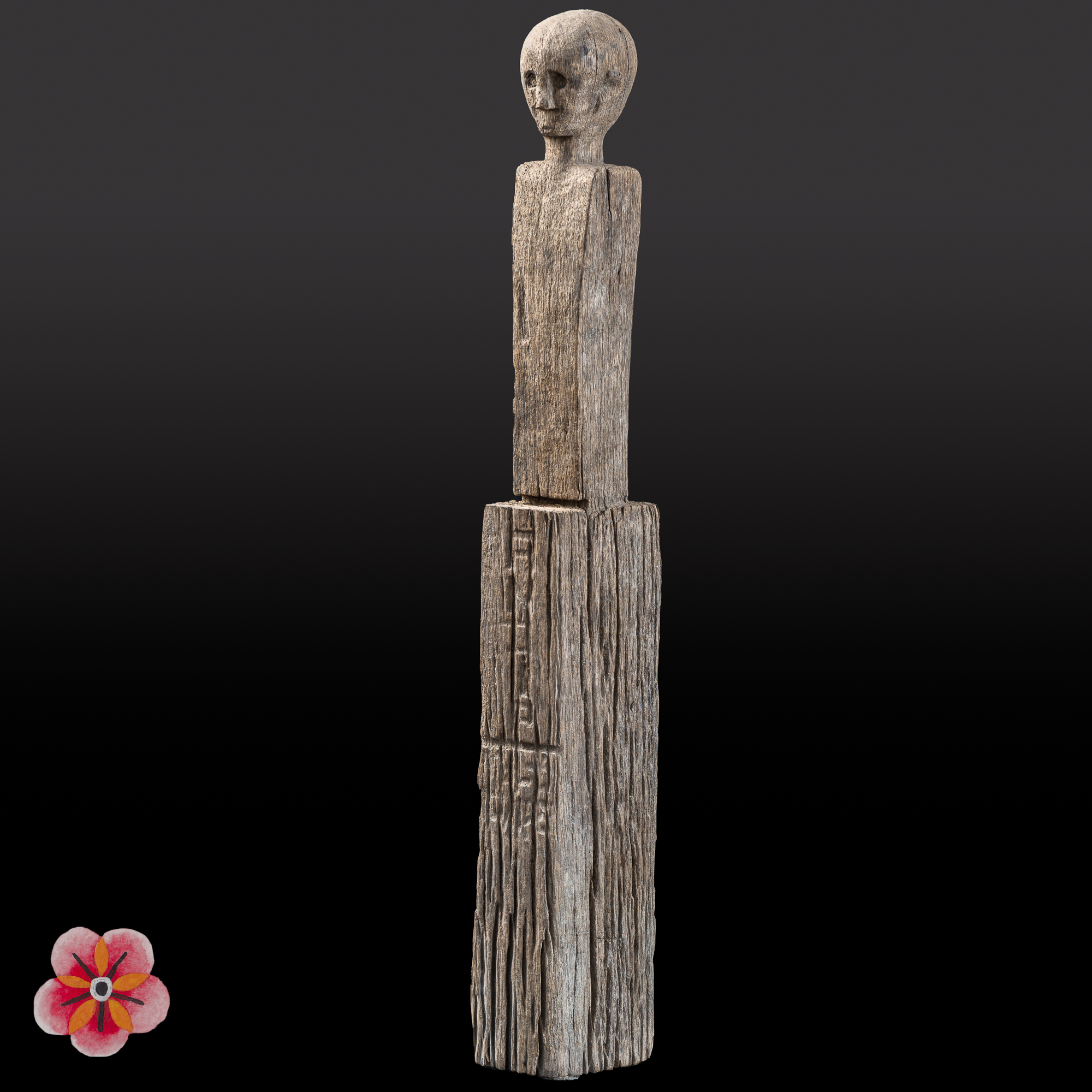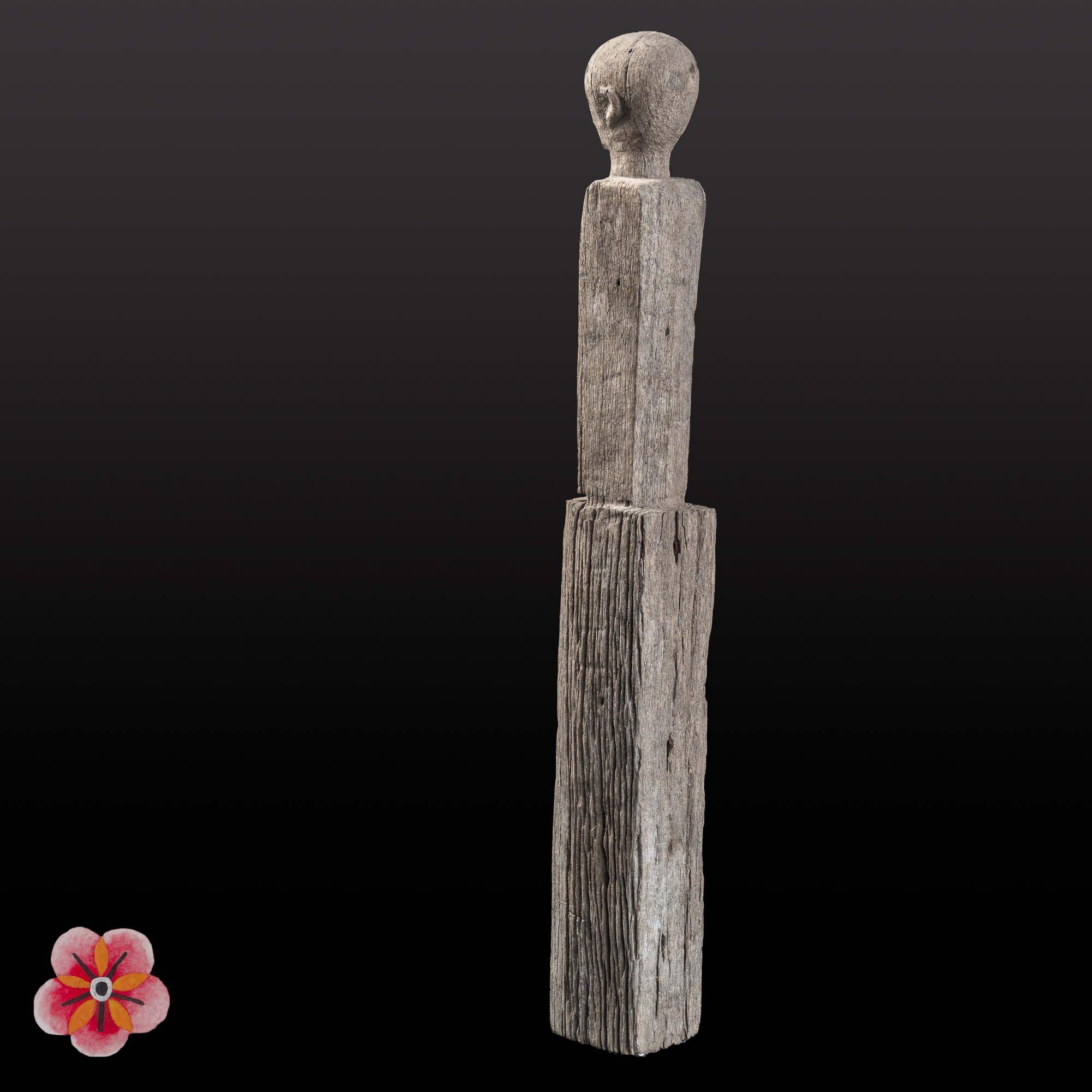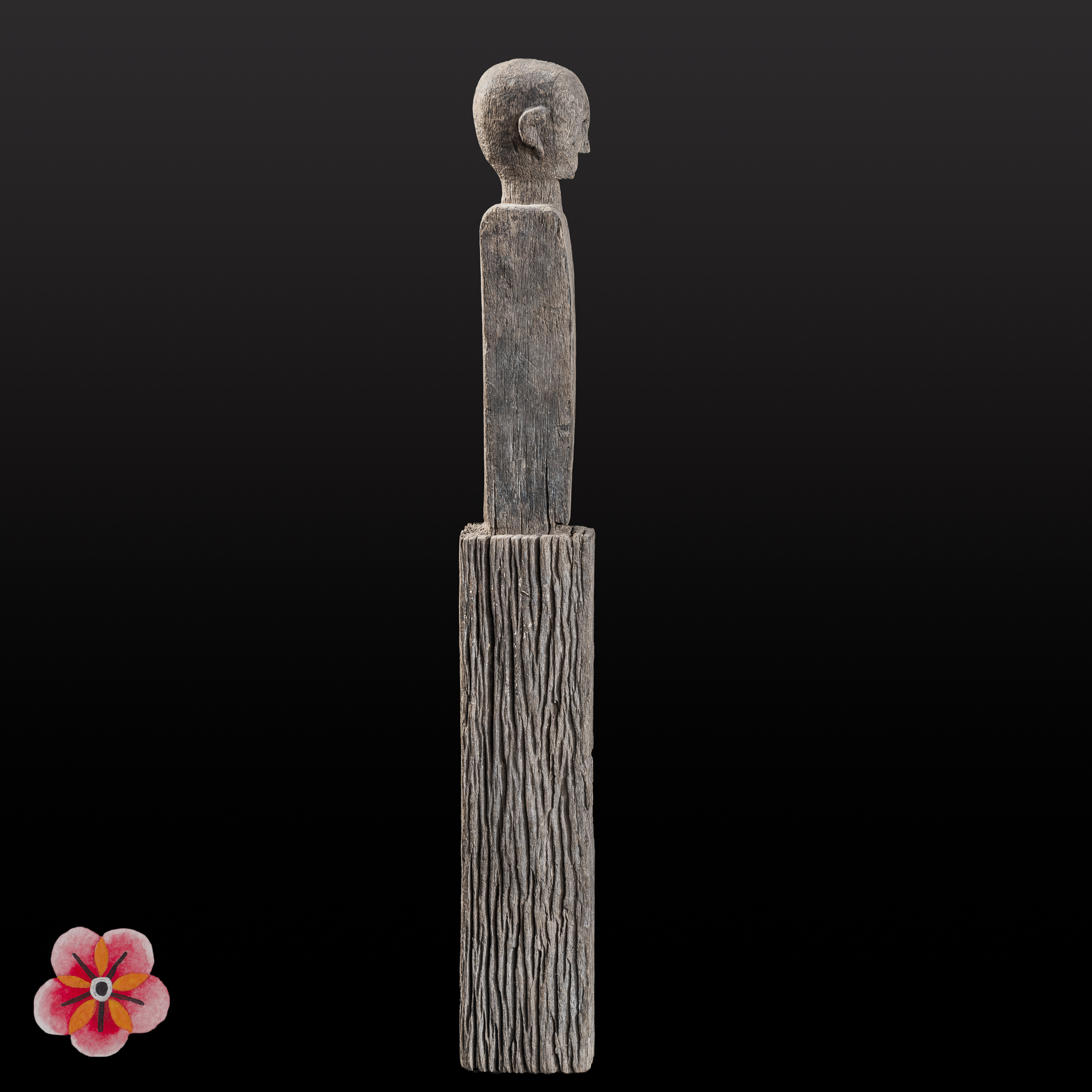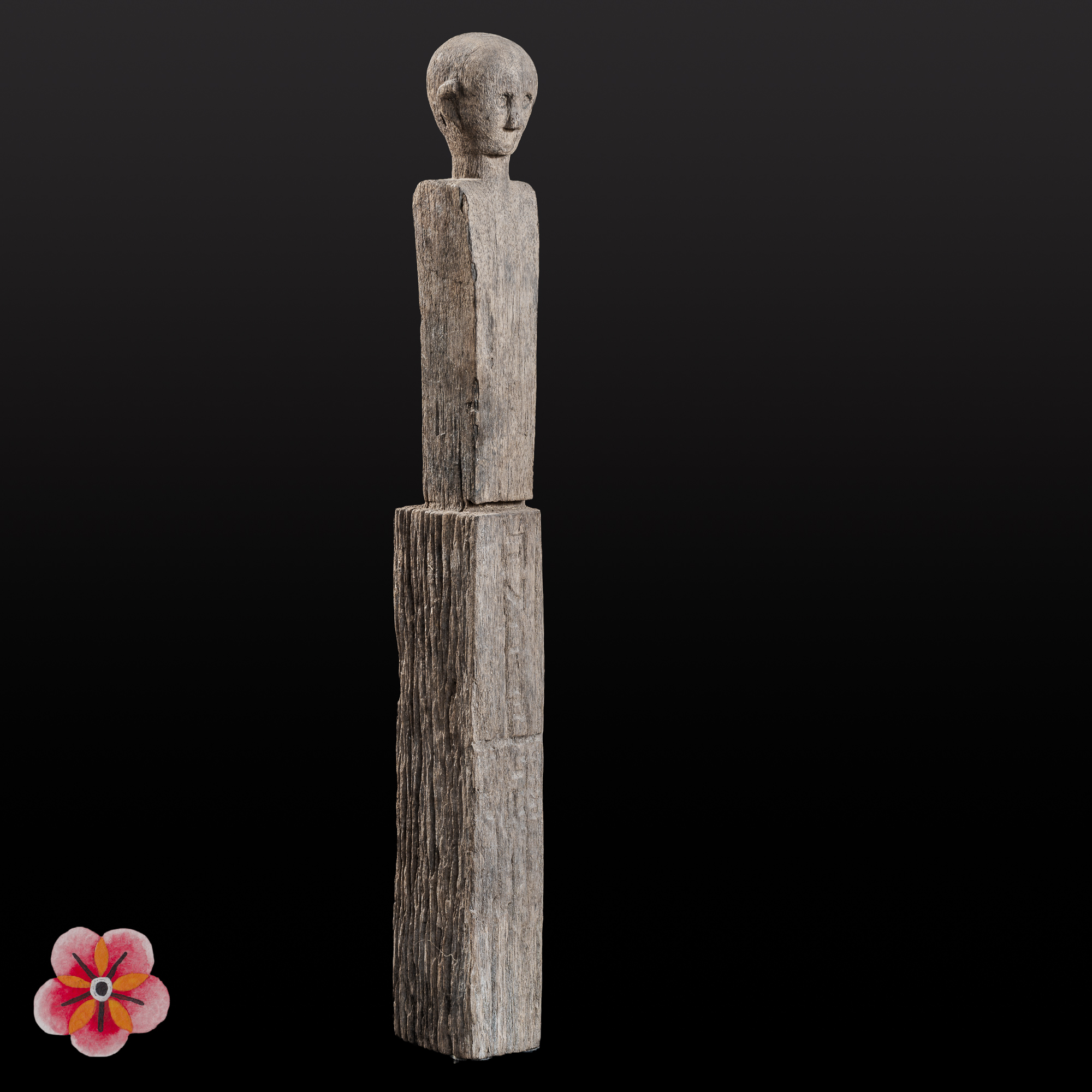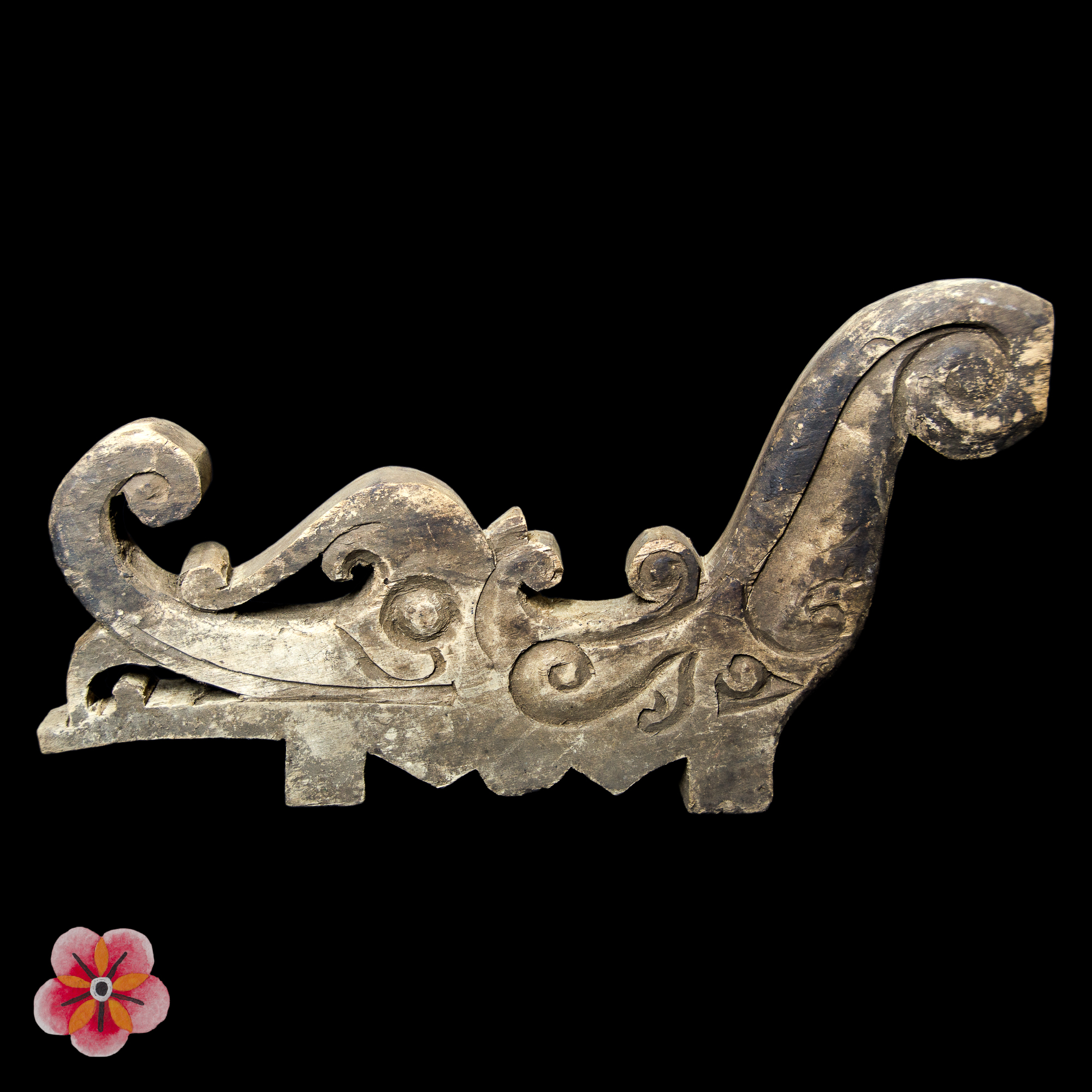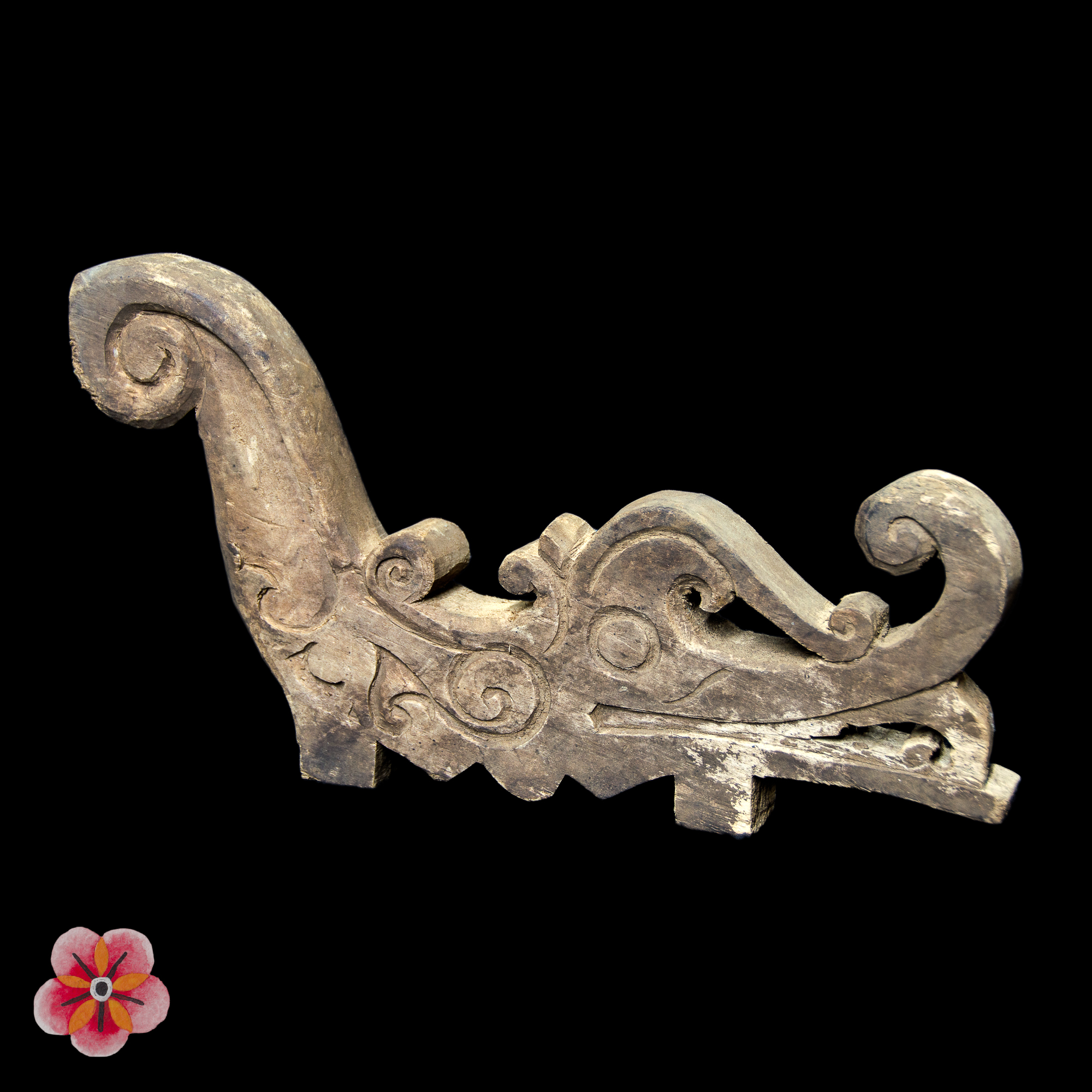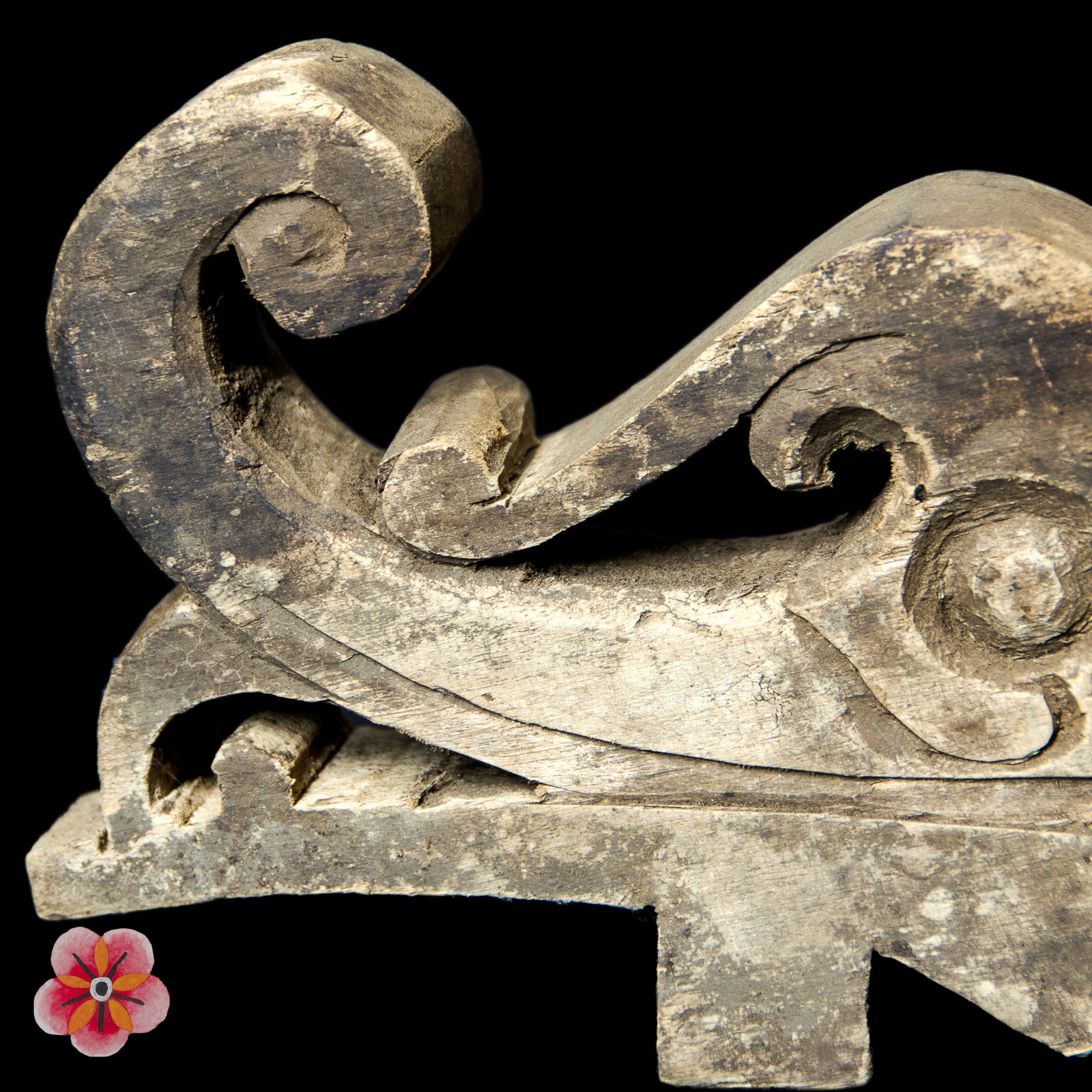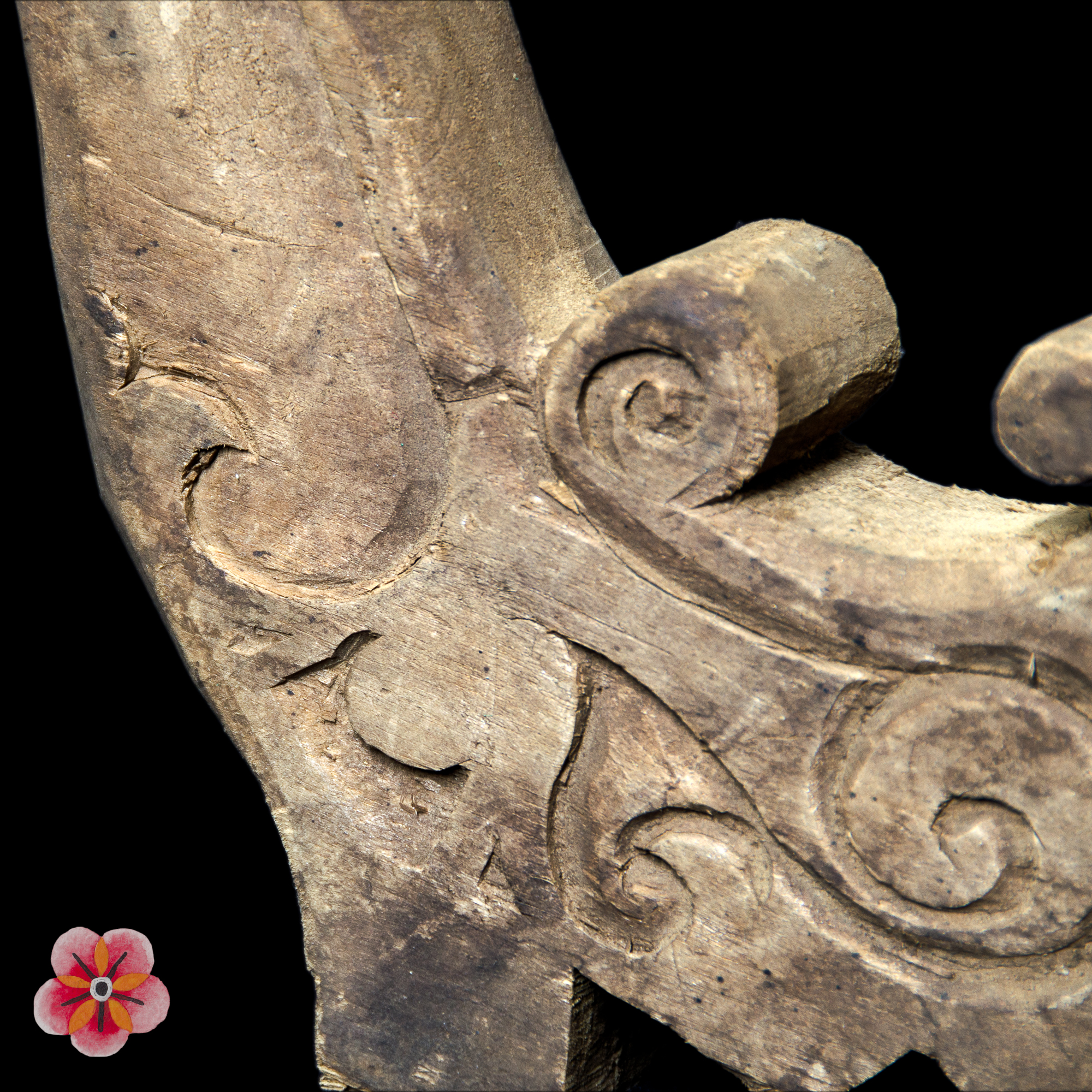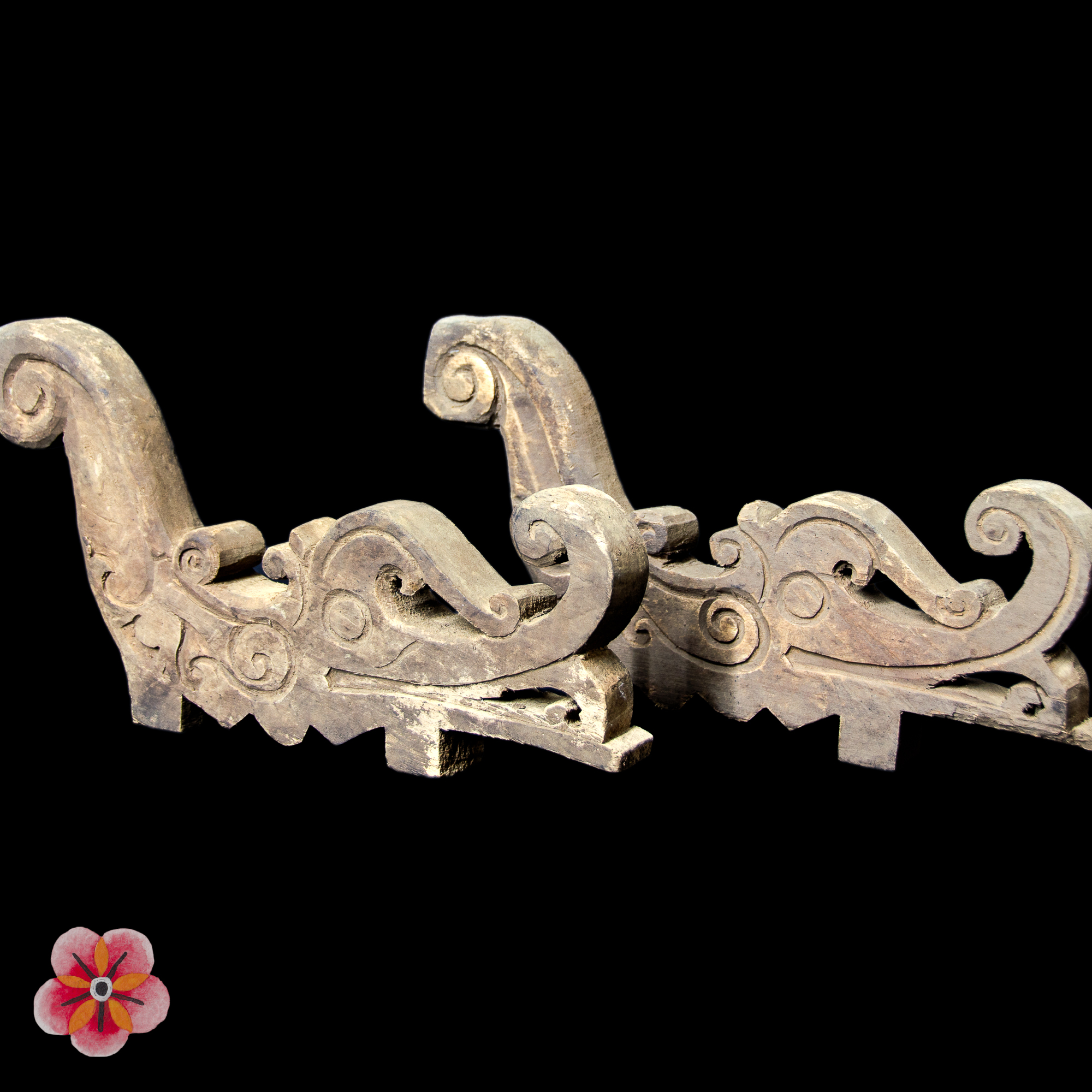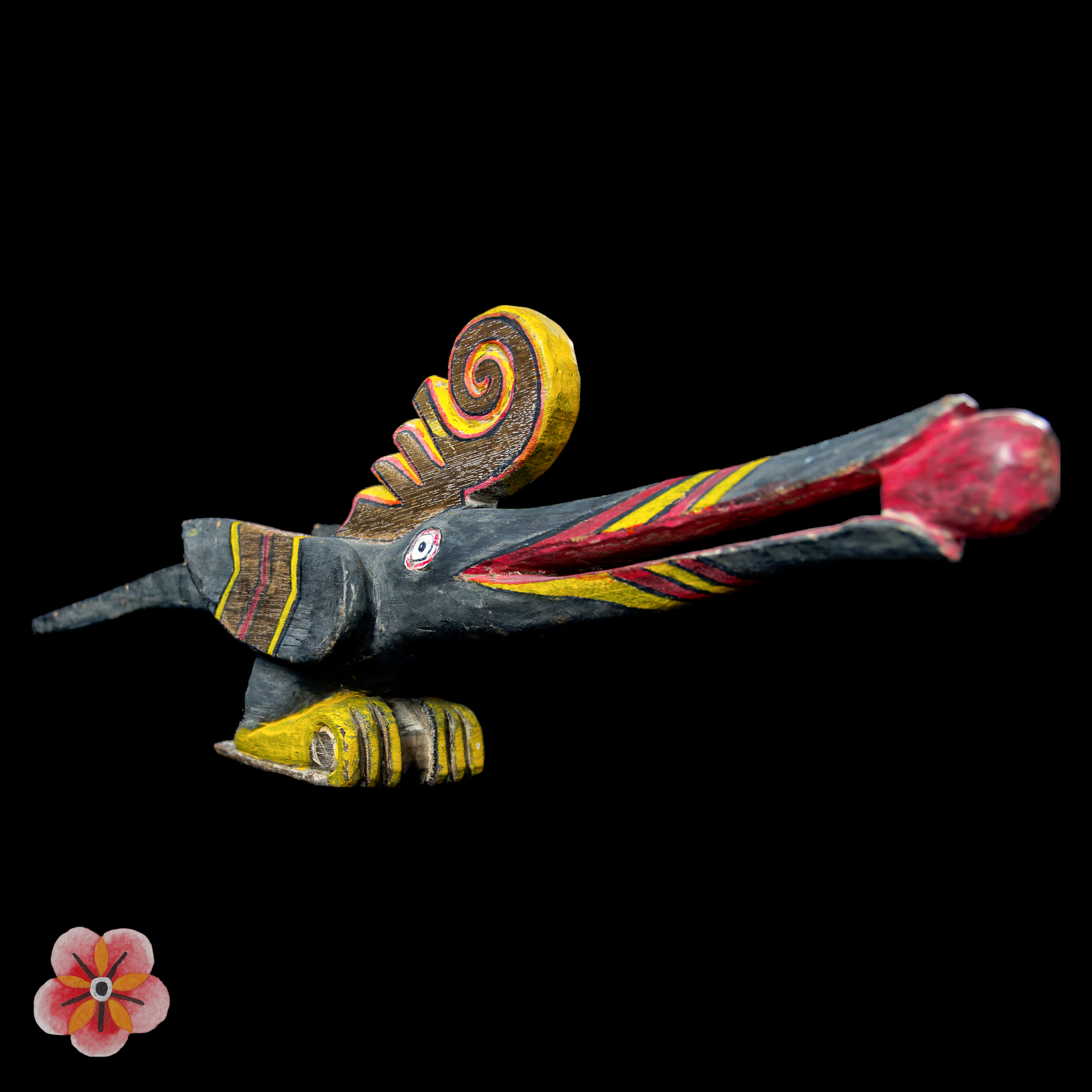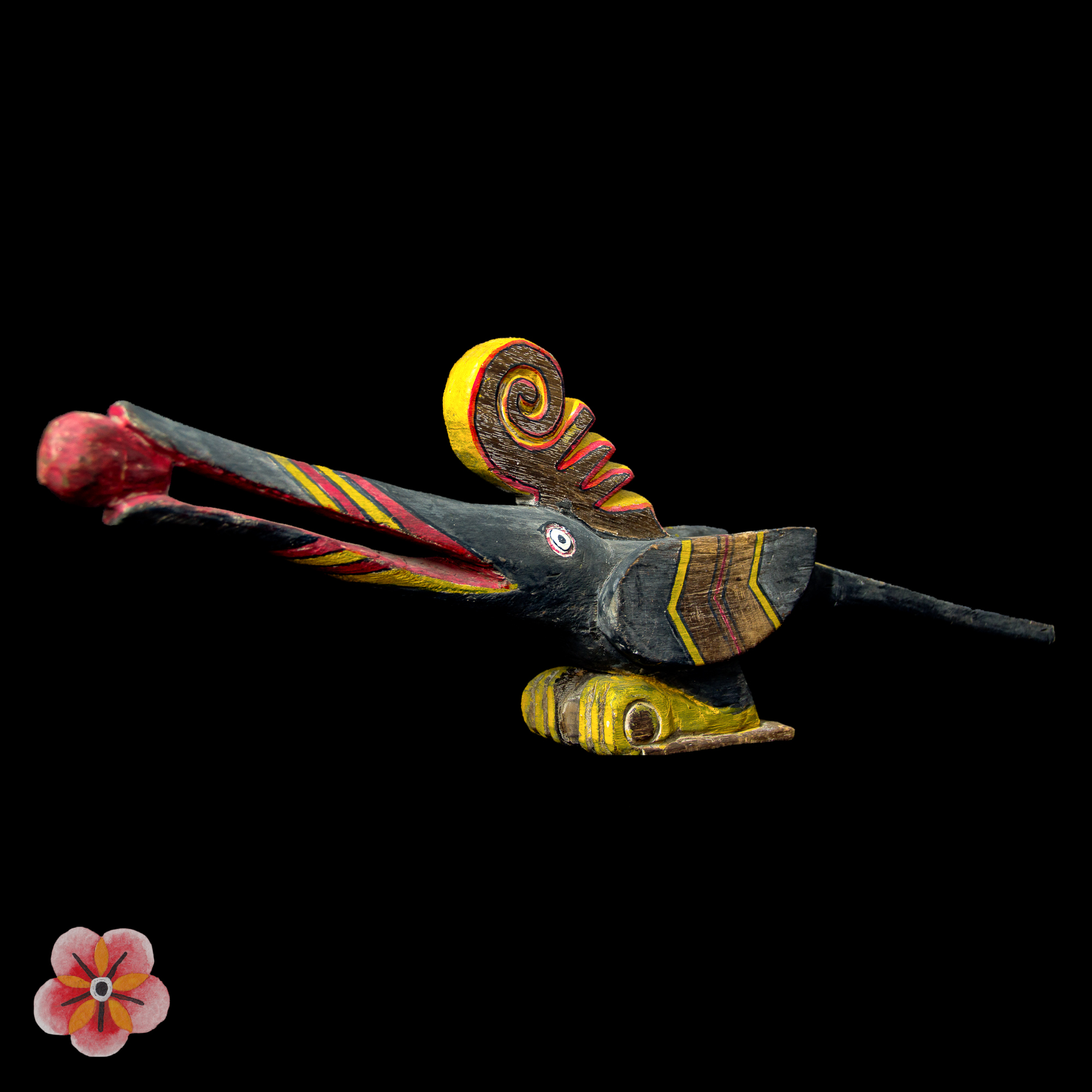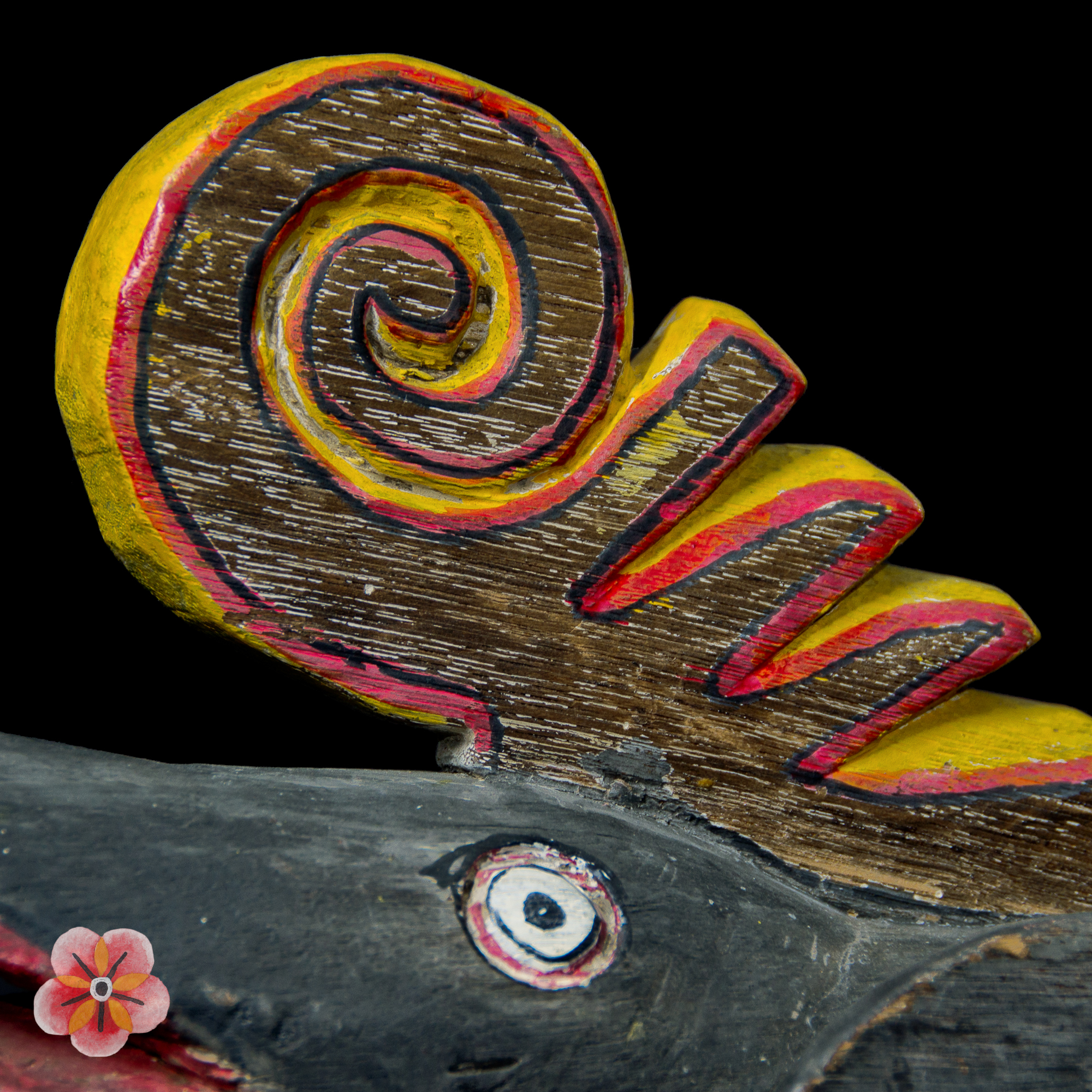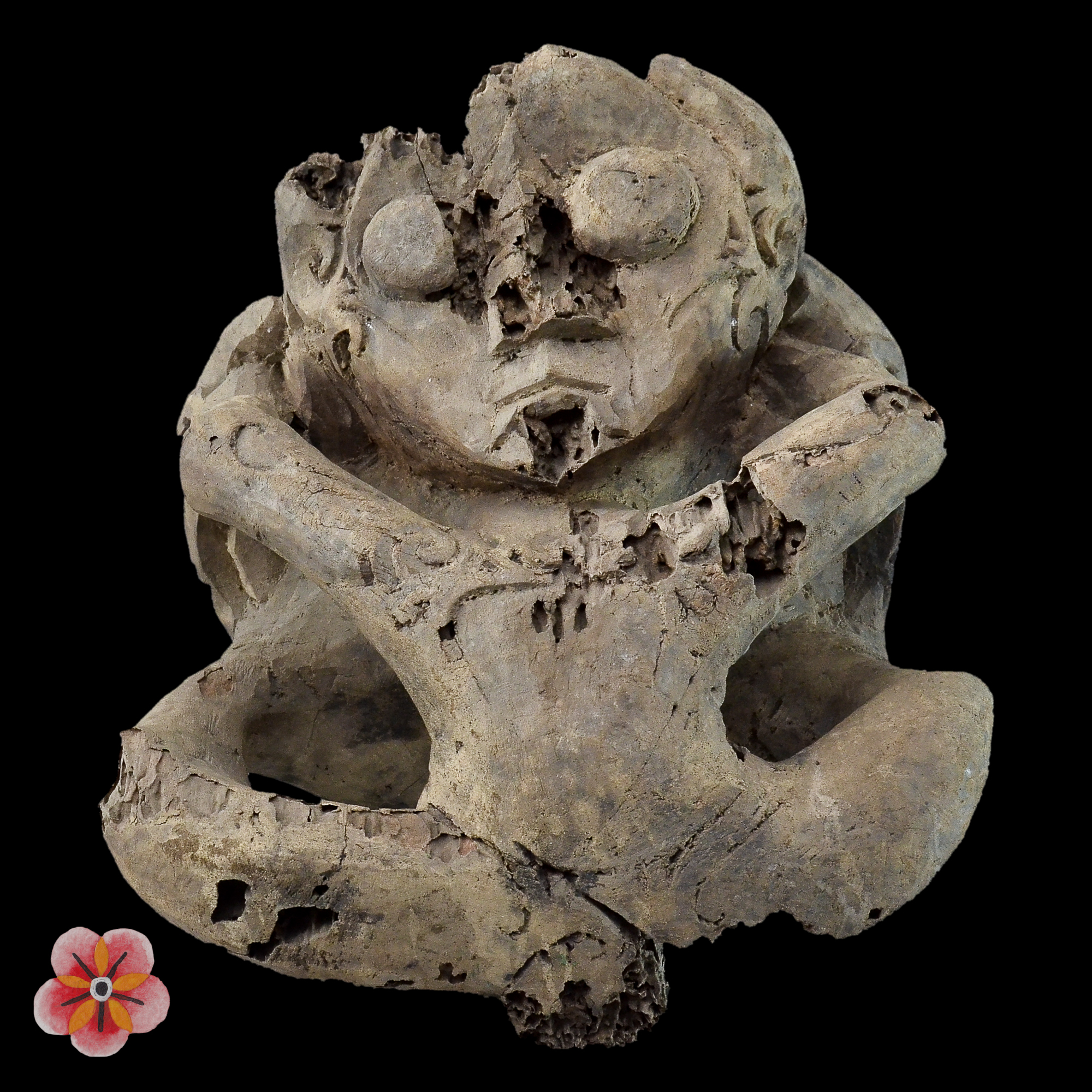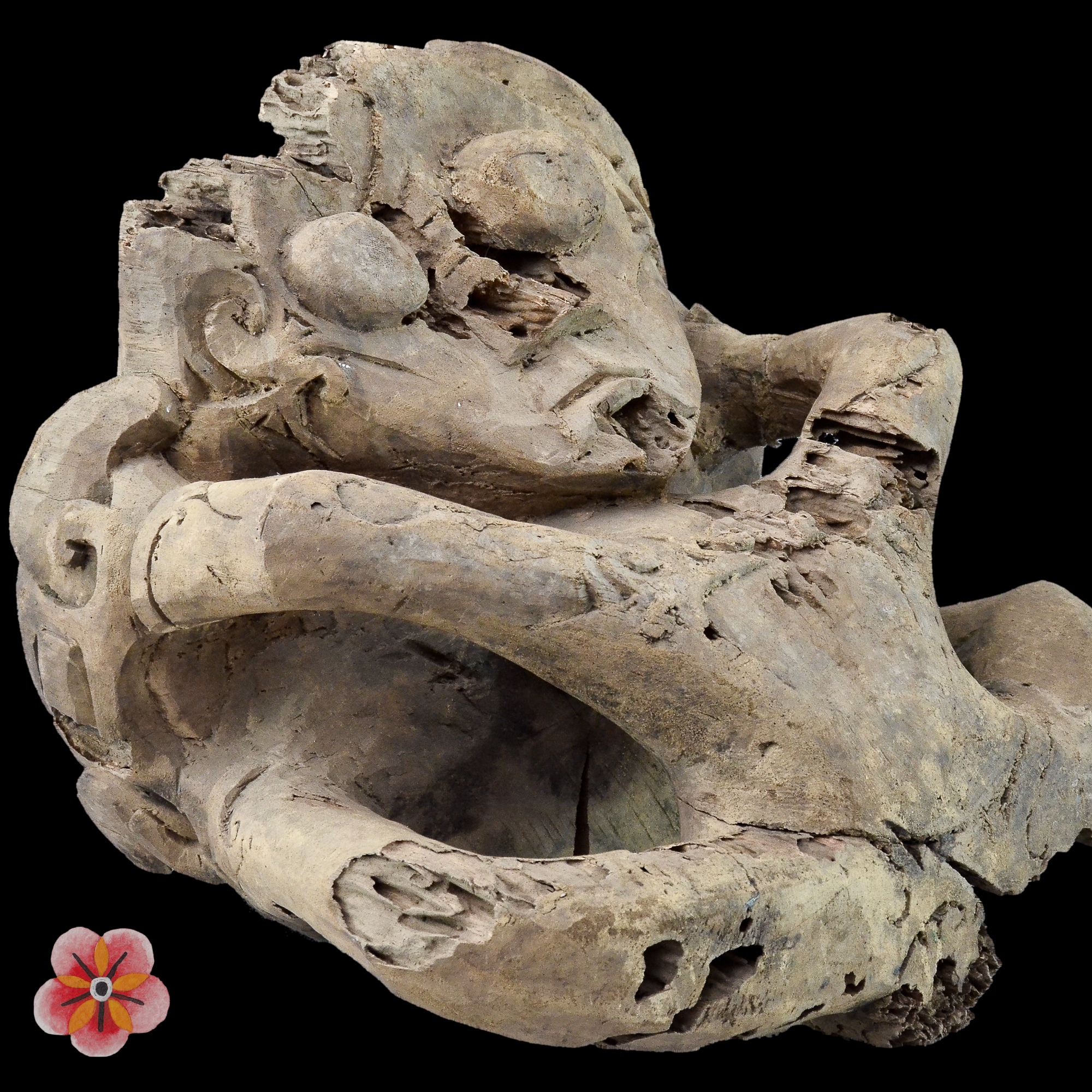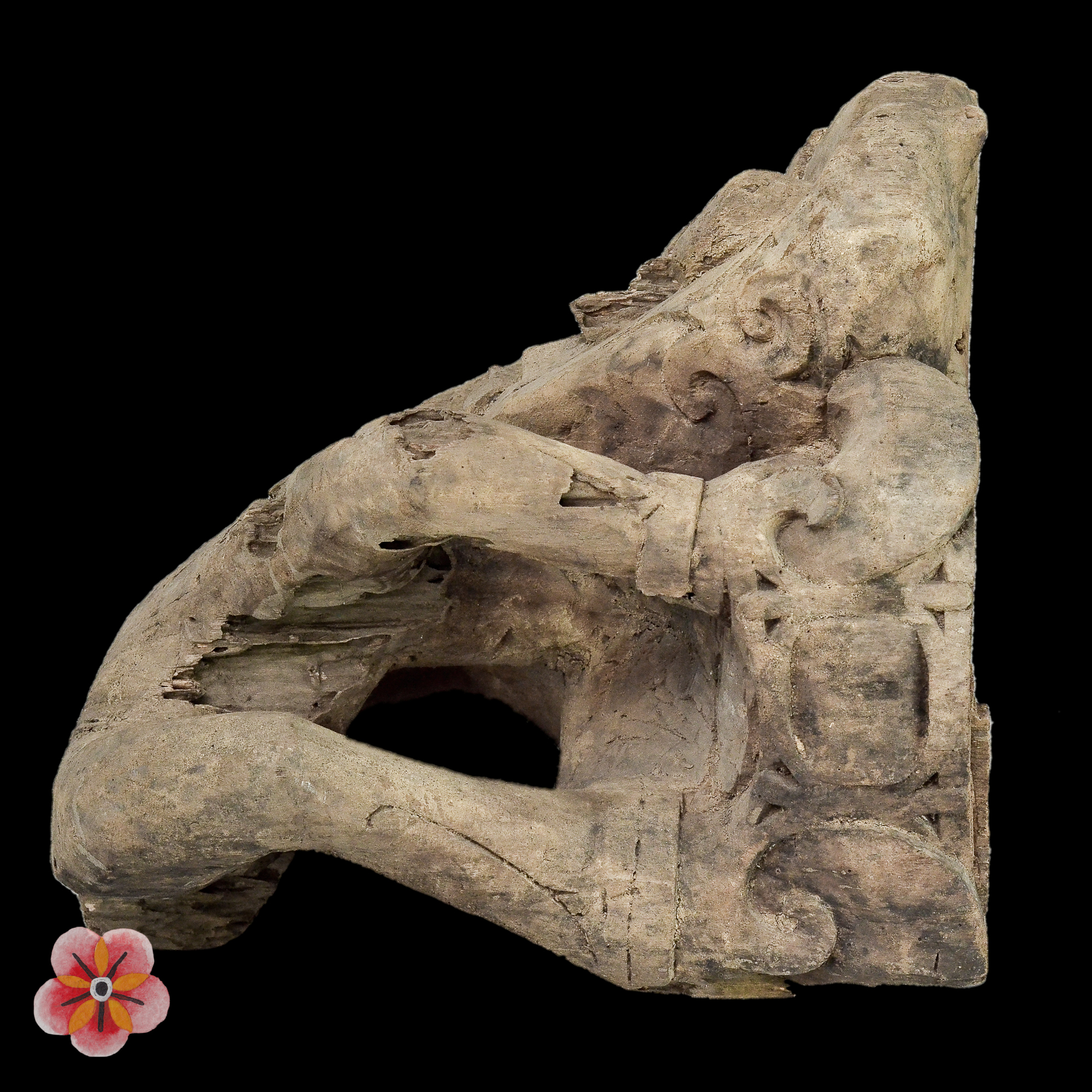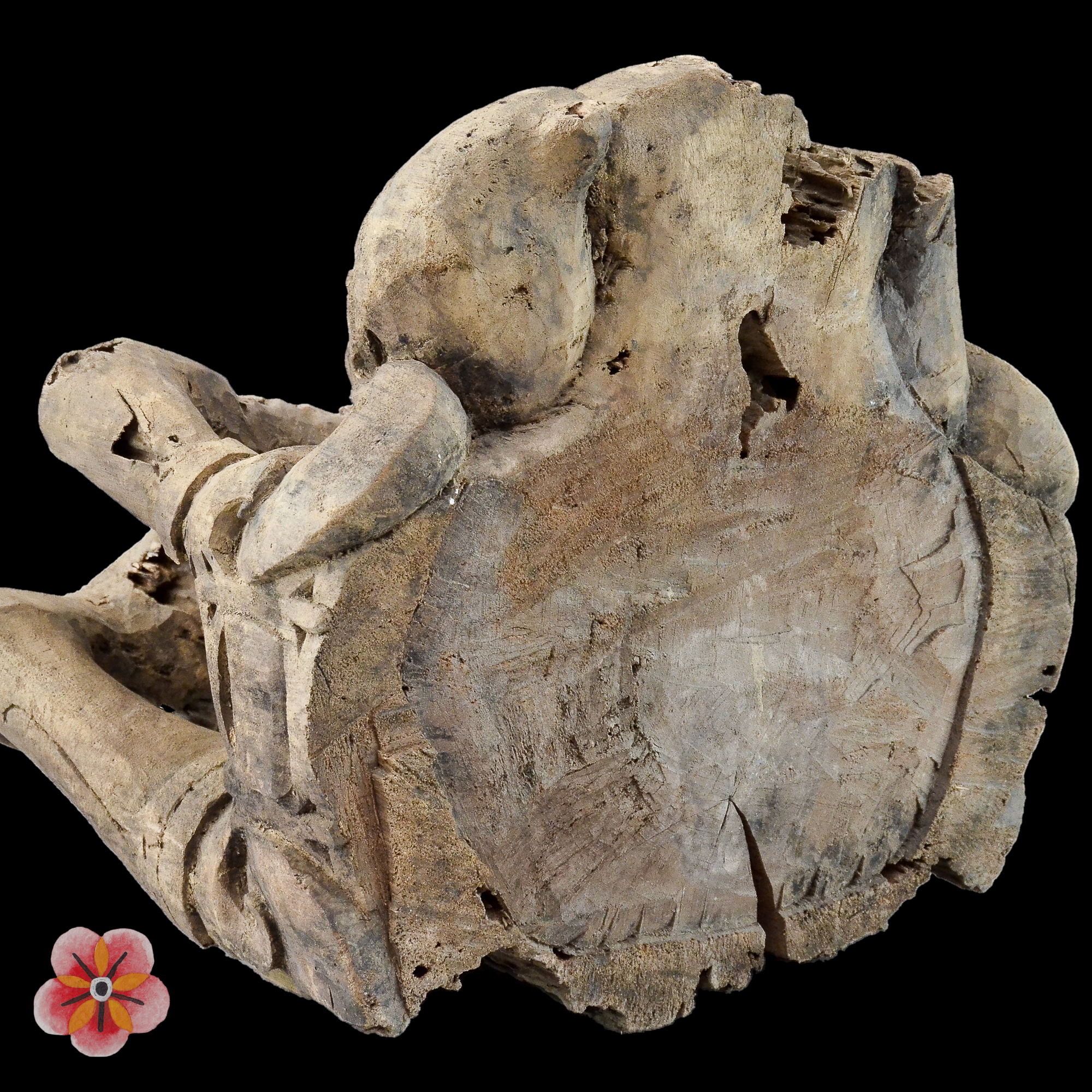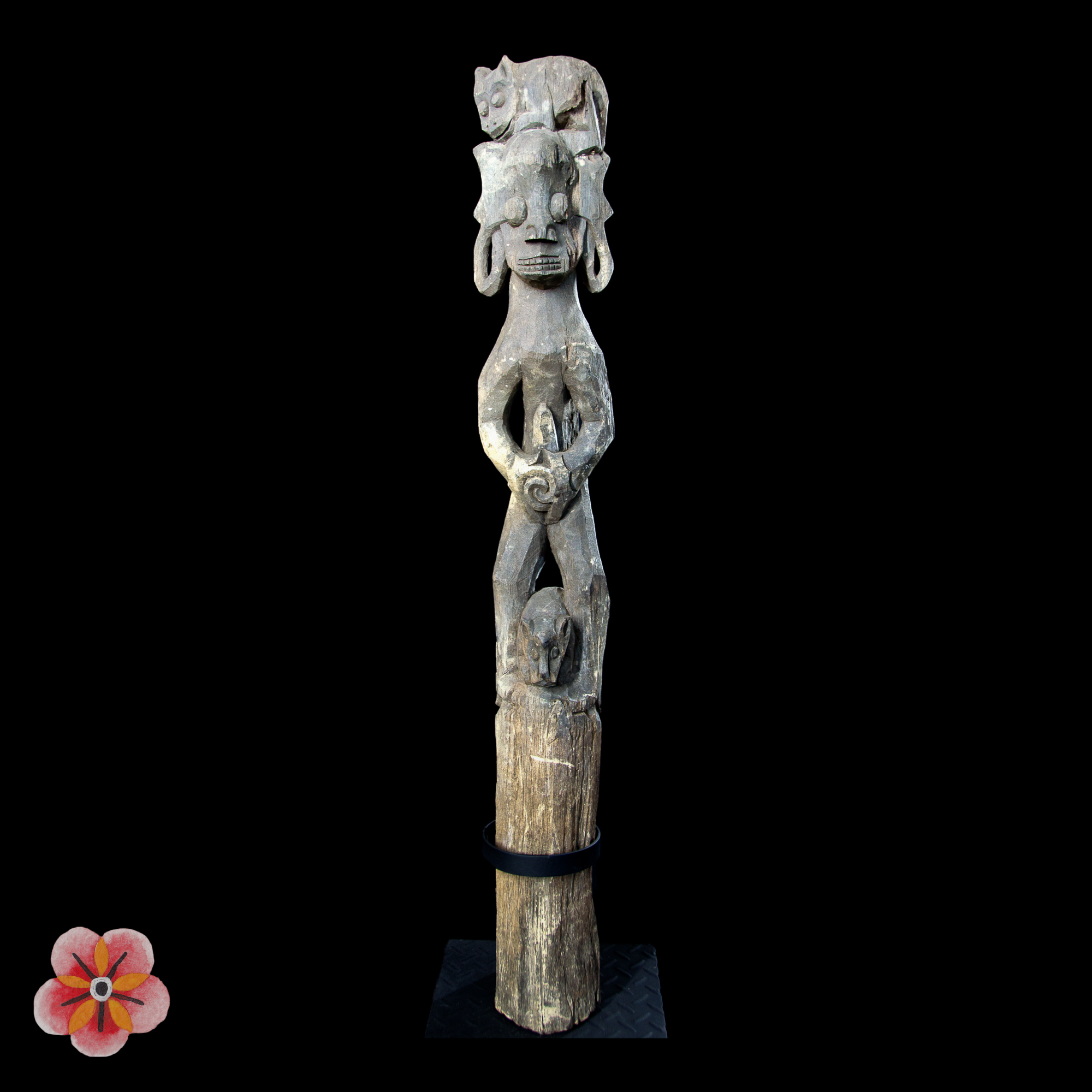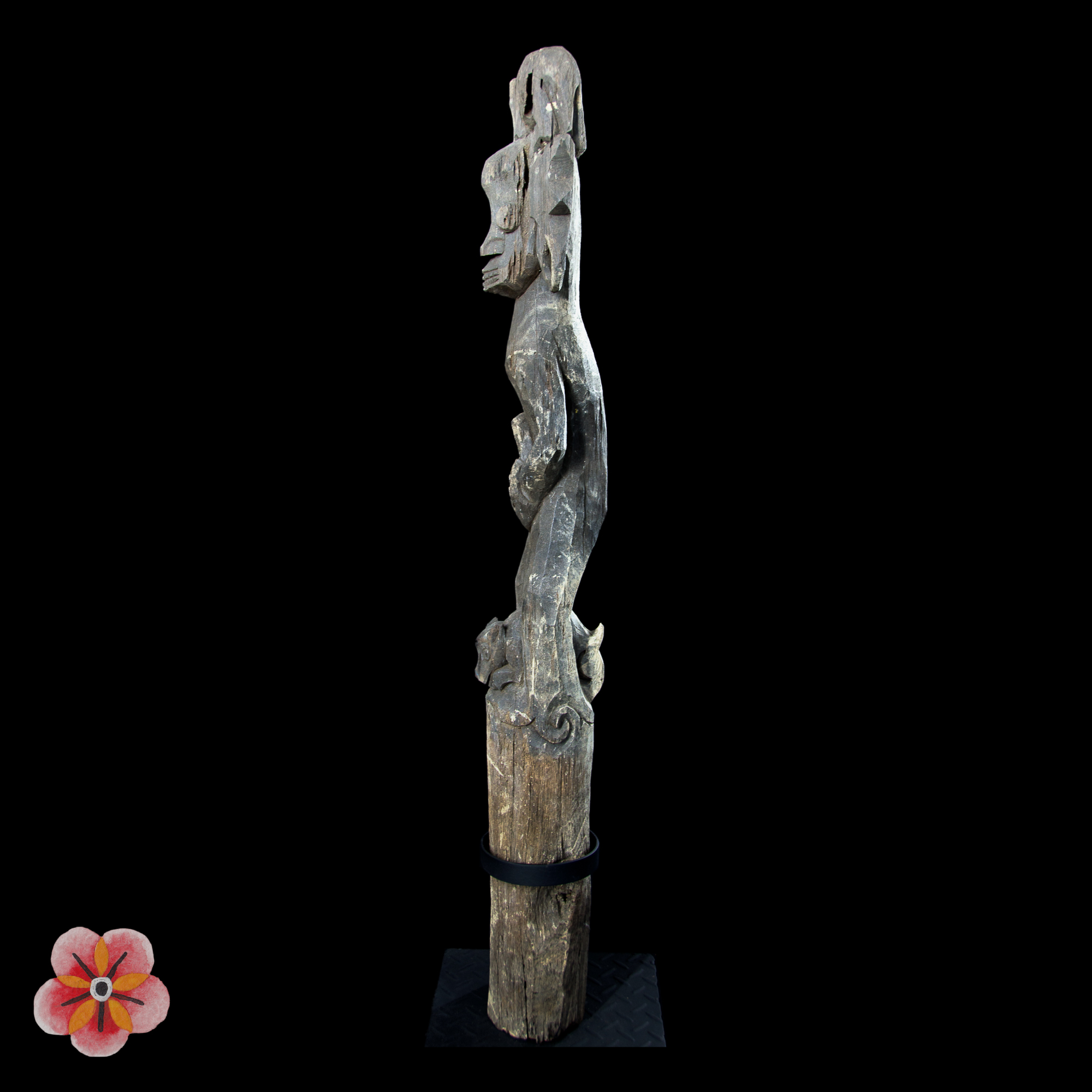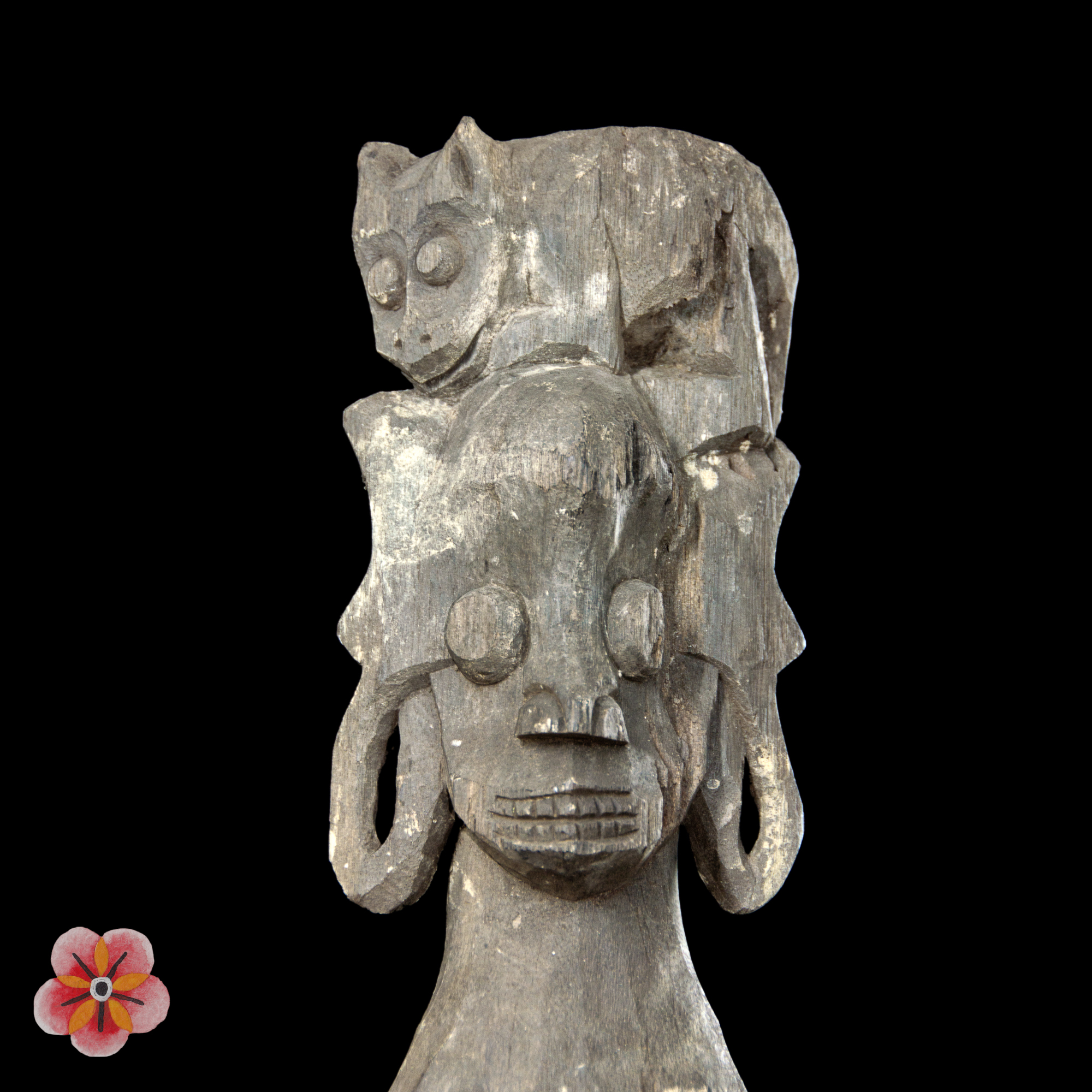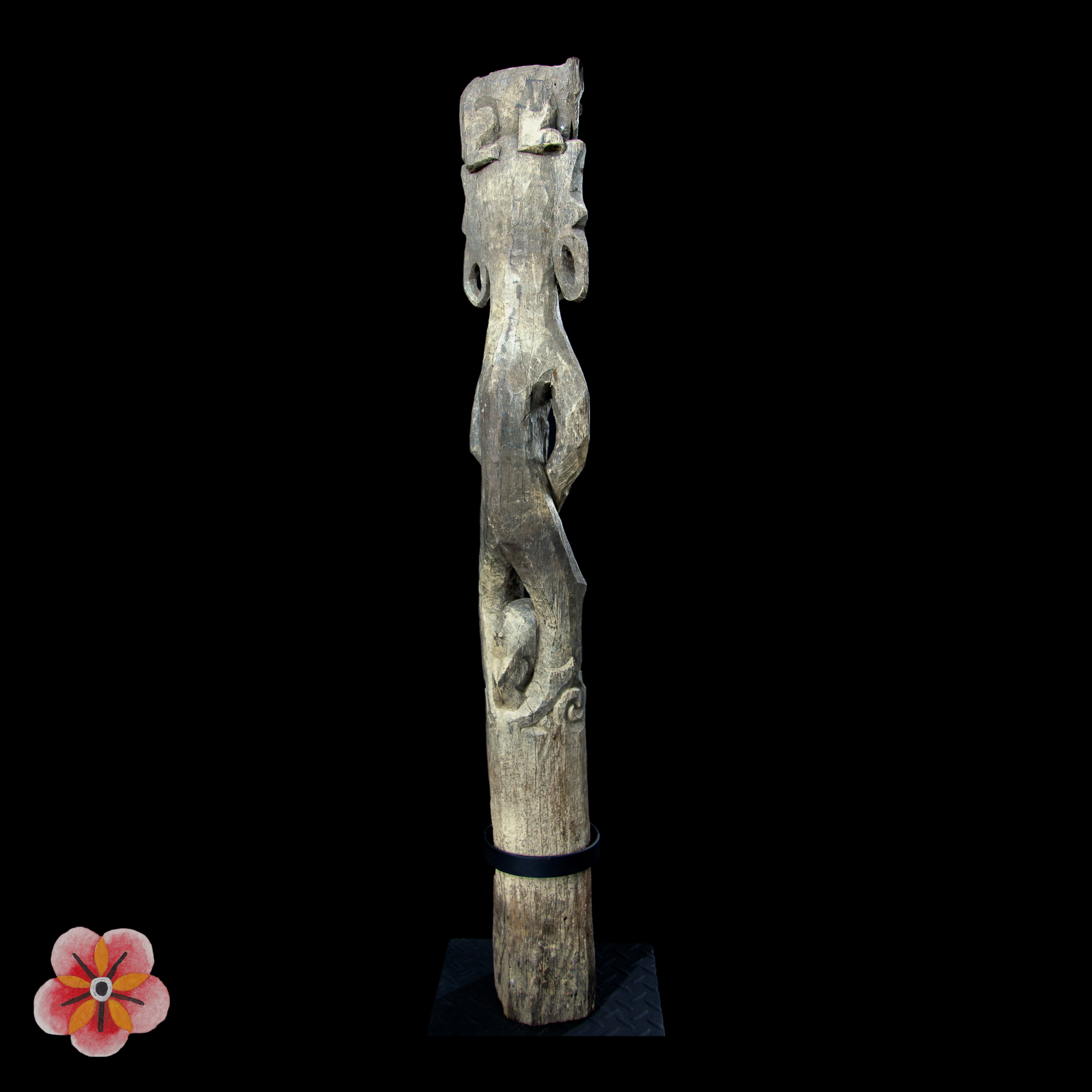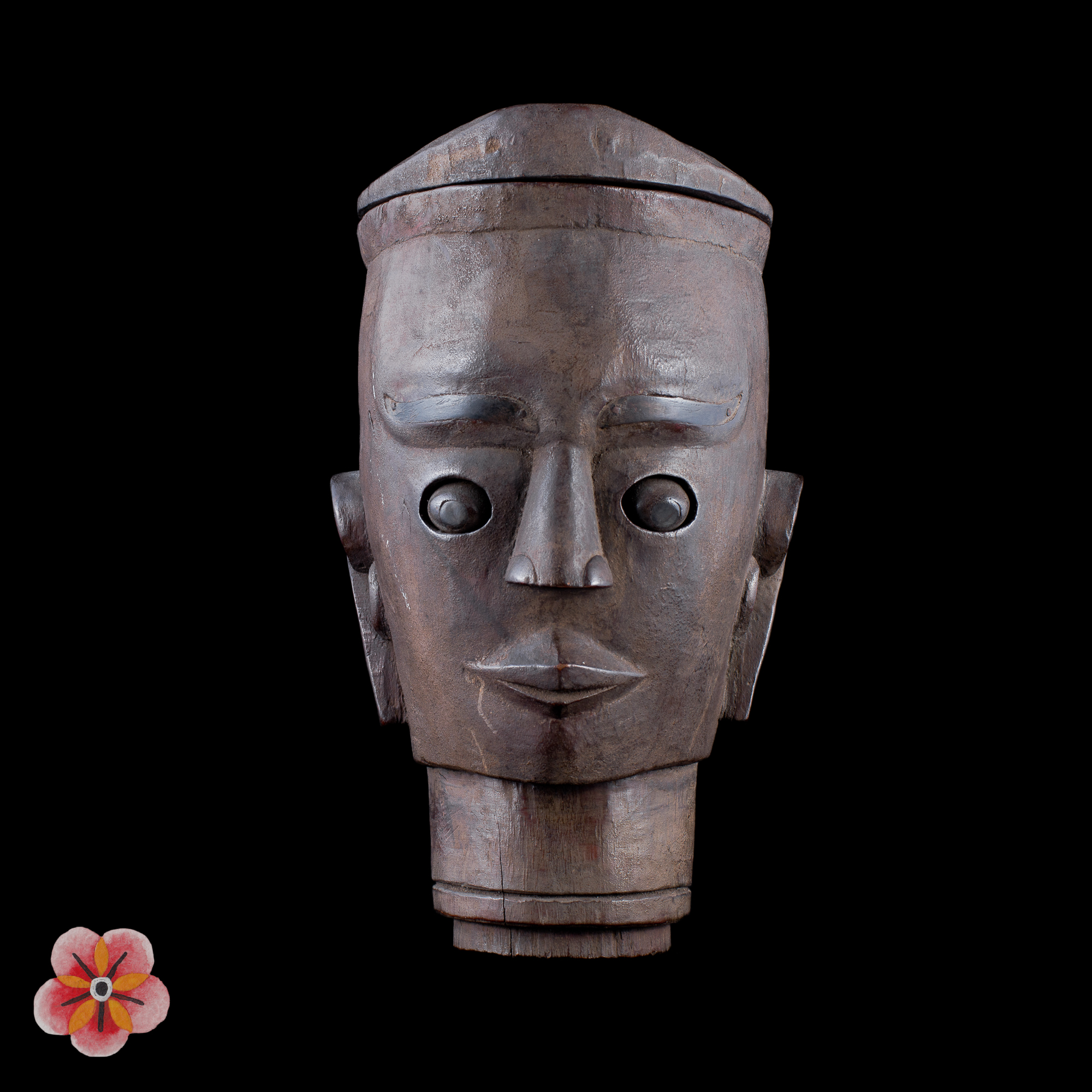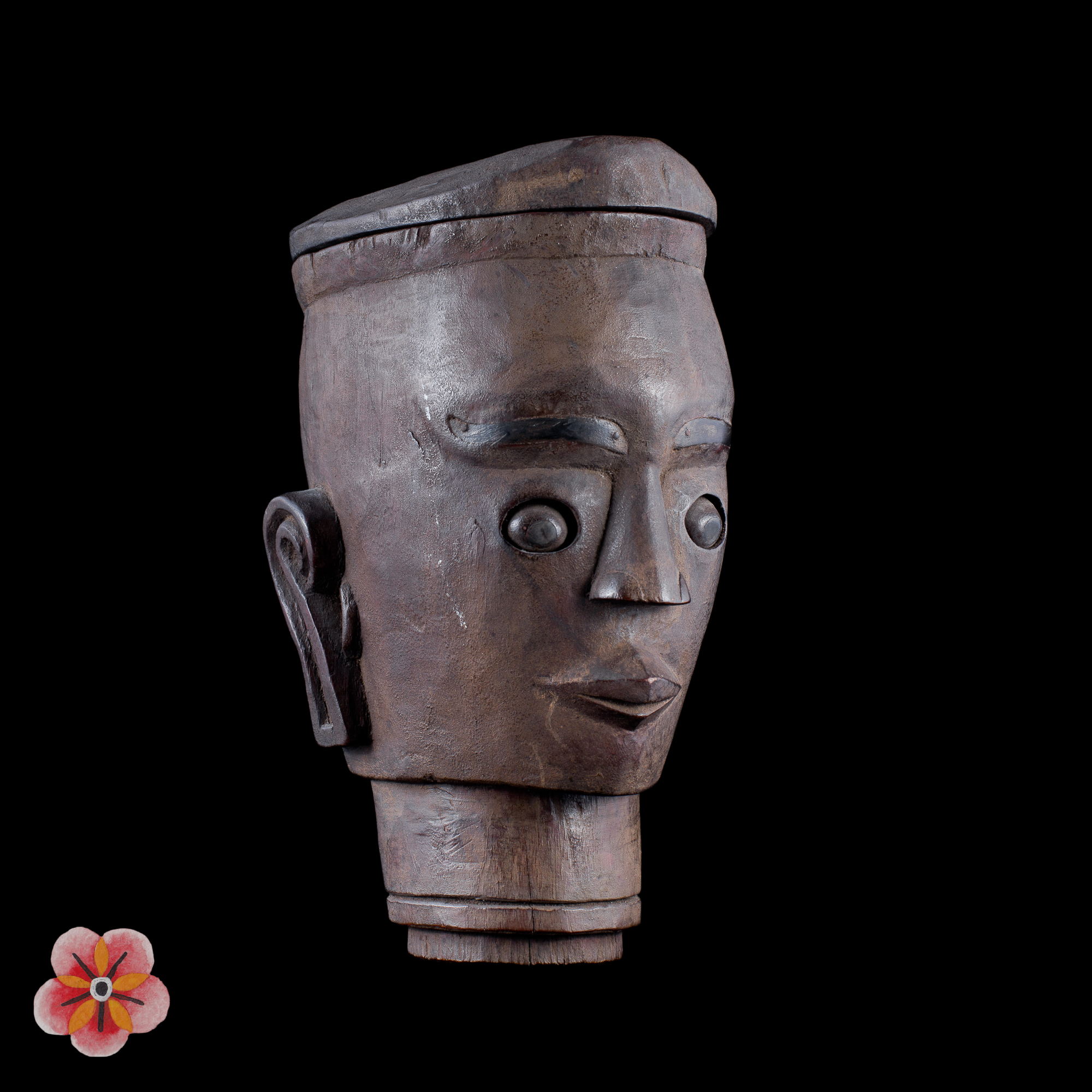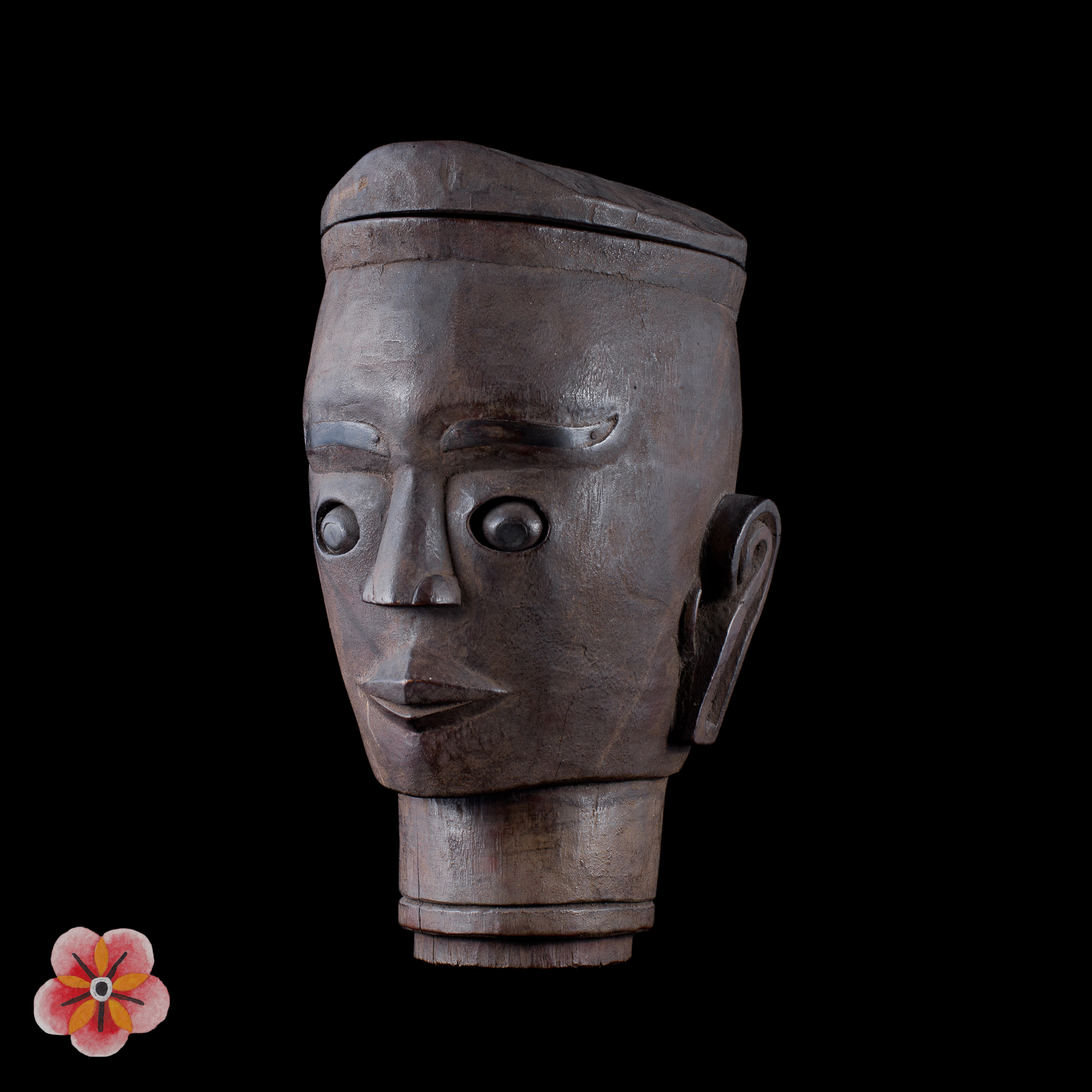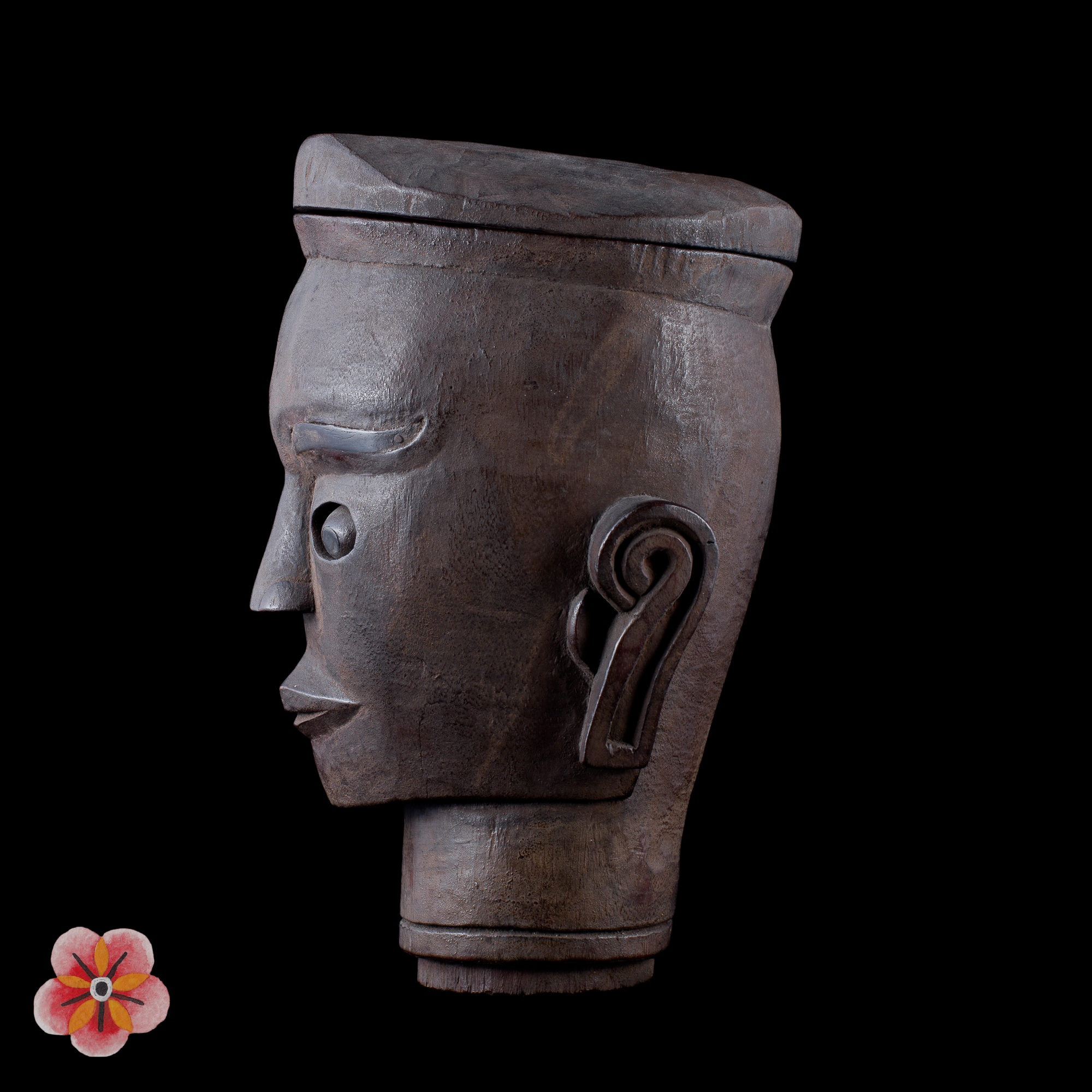Mystical Enchantment: Naga Sculpture from East Borneo
This captivating sculpture coming from East Borneo and belongs to the Benuaq Dayak people. Crafted from wood and adorned with pigments and patina, it stands at an impressive size of 86 × 34 × 7 cm.
The sculpture represents a naga head, which served as the central element of a suspended altar used in purification and healing ceremonies. The naga, a significant figure in Dayak cosmologies, displays its characteristic large, open mouth with exposed fangs, symbolizing its potency and power.
Delicately carved spiralling leaves on the naga's back represent its pointy scales, adding to the sculpture's artistry and attention to detail. A distinctive decorative style is evident, where a lotus flower stands for an eye, reflecting the refined taste for composition.
A similar sculpture to this can be found in "Hornbill and Dragon" (pp. 421-422), showcasing the prevalence of such mythological representations in Dayak art. Additionally, an important reference for its unique decorative style can be found in a naga of the Brignoni Collection, published in "Patong" (pp. 32-33).
This naga head sculpture is particularly noteworthy for its dual profiles carved on its head—one fierce and the other mild. This suggests the duality of life observed and overseen by this mythological being.
As an essential piece in Dayak ceremonial practices, this naga head sculpture holds great cultural and spiritual significance. Its intricate design and distinctive elements make it a valuable and exceptional artifact, reflecting the Benuaq Dayak people's rich artistic tradition and their deep reverence for mythological beings and their rituals.
